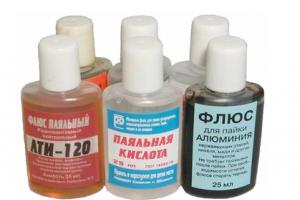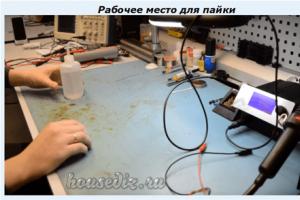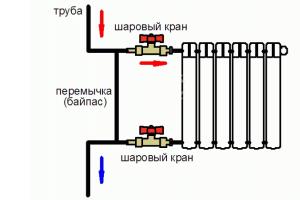Pinworms in a breastfeeding mother are a tragedy in the family. After all, all the tablets used to combat them deal a blow not only to worms, but also to the entire body as a whole. Is there a treatment that does not require giving up breastfeeding and are anthelmintic drugs really dangerous for a child?
Routes of infection and habits of pinworms
To understand what treatment for pinworm infection will be most effective, you need to figure out what kind of uninvited guests have settled with a nursing mother.
The disease caused by pinworms is called enterobiasis. It is very easy to become infected with these worms through dirty hands, clothes contaminated with pinworm eggs, bedding, food, in a public restroom and even with inhaled air - the eggs enter the nasopharynx, and then through the esophagus into the gastrointestinal tract. Under environmental conditions, worm eggs remain viable for 2 weeks.
The life cycle of pinworms begins with the penetration of eggs into the intestines, where they quickly mature into white worms no more than 12 mm in length. Pinworms are of different sexes - females are 9–12 mm long with a pointed straight tail, males are 3–5 mm long with a rounded tail. The simplicity of the structure of these worms is only apparent.
The liquid-filled internal cavity of the pinworm is equipped with digestive, nervous, reproductive, excretory and muscular systems. In the three-layer shell, the hypodermis retains substances toxic to the helminth. The digestive system begins with the mouth, surrounded by lips, with which the pinworm attaches itself to the intestinal walls, and ends with the anus.
The sense organs are limited to touch and the chemical sense - smell, taste, perception of humidity, temperature and carbon dioxide. They feed on the contents of the intestines and can swallow blood.
Do pinworms have brains? Worms have something similar to this organ in their heads - accumulations of nerve cells in the form of a ganglion, from which several nerve trunks extend.
After 2–3 weeks of infection, the worms reach sexual maturity and begin to reproduce. Pinworm eggs require air to develop. Therefore, after 4 weeks from their birth, fertilized females go on a tour to lay eggs. It occurs in the skin folds around the anus and the perineum area of the nursing mother. Worms move at an enviable speed - up to 12 cm per minute.
Vitamins and nutrition for nursing mothers
Beautiful representatives of pinworms prefer to go out into the world after waiting for silence and darkness. Female worms emerge either when the hostess of a hospitable house goes to bed, or when she is sleeping. One such worm is extremely prolific - it lays 5-15 thousand eggs.
After laying eggs, female worms die, and males go to another world even earlier - after completing their main task - fertilization. On average, pinworms live 4–6 weeks, some long-lived females up to 8 weeks. The eggs on the skin mature after only 4 hours and are ready to repeat the entire life cycle all over again.
Symptoms of enterobiasis caused by pinworms
The itching intensifies at night and continues with re-infection at intervals of 2-3 weeks for about 3 days. If repeated infection with laid eggs occurs and the number of worms increases obscenely, then the itching can become permanent.
Symptoms of intoxication are added - fatigue, lethargy, headache, and often signs of allergies. When enterobiasis occurs in a nursing mother, infection of a breastfed child occurs with a high probability. Pinworms can be seen in feces and on underwear.
What tests are needed to identify pinworms?
It is advisable to carry out the analysis during the period when pinworms are laying eggs, that is, when itching occurs. Scrapings from the skin around the anus are examined under a microscope. It is done either with a cotton swab or with adhesive tape.
Itching around the anus, caused by pinworms that come out for a “walk” in the evening and at night, steals the sleep that a nursing mother already has in short supply. Lack of sleep, increased nervousness, and deterioration in well-being appear. Irritability during breastfeeding reduces the synthesis of oxytocin, which does not have the best effect on the process of milk outflow from the breast and postpartum recovery of the uterus.
The connection between appendicitis and the penetration of pinworms into the vermiform appendix of the cecum, the appendix, is questionable in medical circles. By sticking to the intestinal walls, worms disrupt the integrity of the mucous membrane, which can provoke inflammatory processes and enterocolitis.
The waste products of worms poison the body and increase the production of immunoglobulin E, leading to increased release of histamine and allergic reactions.
Persistent dermatitis, eczema and other skin diseases, according to some studies, are caused by helminthic infestations in more than half of the cases.
Menstruation and bleeding - differences and characteristic signs
Pinworms can crawl into the genitals and cause vulvovaginitis in women and inflammatory diseases of the urinary tract and genital organs. With severe infestation, even peritonitis is possible - inflammation of the peritoneum when worms penetrate through the intestinal wall into the abdominal cavity. The absorption of nutrients, vitamins, and minerals is impaired, which can affect the quality of a nursing mother’s milk.
Treatment while breastfeeding
 If there are few settlers in the intestines, then special treatment with tablets for enterobiasis caused by pinworms is not required. It is necessary to observe a strict sanitary and hygienic regime that does not allow the eggs to spread wherever they please. Findings of these highly infectious germs of life have even occurred on the ceiling.
If there are few settlers in the intestines, then special treatment with tablets for enterobiasis caused by pinworms is not required. It is necessary to observe a strict sanitary and hygienic regime that does not allow the eggs to spread wherever they please. Findings of these highly infectious germs of life have even occurred on the ceiling.
Better yet, do not give the females the opportunity to lay them. To do this, a nursing mother can place a cotton swab in the anus at night and between bowel movements. Careful observance of hygiene rules by all family members, young and old, is mandatory - washing with soap after waking up, every visit to the toilet, “peeing”, “pooping” in a child, cleaning the toilet with disinfectants, washing hands with soap before eating, cutting nails short, under which pinworm eggs are so fond of “ripening.”
You won't be able to rest too much with pinworms - the most important component of treatment is daily wet cleaning to remove dust, which may contain worm eggs.
Frequent washing and ironing of bed linen, curtains, underwear, etc. is required. - at high temperatures, worm eggs die.
To relieve itching and reduce colony numbers, you can do enemas at night with plain water to wash out the worms.
After 6 weeks of such a drug-free fight against pinworms, you can breathe easy, not forgetting about daily wet cleaning and careful personal hygiene for at least another 2 weeks.
This method of treatment during breastfeeding is the safest for a breastfeeding child.
Treatment of hemorrhoids during breastfeeding with popular remedies after childbirth
To get rid of pinworms faster, pharmaceuticals offer tablets with the following active ingredients - pyrantel pamoate, albendazole, mebendazole, piperazine, levamisole. If pinworms are detected in a nursing mother, all family members over 2 years of age should take them. The mother herself can also take medications if she can avoid breastfeeding for some time. The components of anthelmintic drugs are toxic and are contraindicated for a newborn child.
Pyrantel, albendazole and mebendazole have the lowest risk during breastfeeding. These drugs are poorly absorbed from the gastrointestinal tract and pass into breast milk in small quantities. In the blood plasma, their traces are usually present within 2–5 hours with normal liver and kidney function. During this period of time, you need to refrain from breastfeeding the baby, and before taking the baby, you can pump and feed the baby expressed milk from a spoon.
In case of liver diseases, the maximum concentration of drugs increases, as does the elimination period. The dosage and duration of treatment are calculated taking into account body weight and the type of helminthic infestation.
Taking any anthelmintic drugs is possible only after consulting a doctor.
Initially, worms live in water or soil. They are widespread in our climate zone, due to the ability to maintain their viability. When eating unwashed food or dirty water, you should remember that worm larvae can enter the body through the digestive system.

Before they finally take root in the small intestine and turn into adult worms, the larvae will move along the walls of blood vessels and mucous membranes. Helminths move through the body, overcoming the liver, bronchi and other organs. Having made a long journey, they eventually reach their destination - the small intestine, where they settle forever. Here the worm can live up to 1.5 years.
The female helminth that finds itself in the human body reaches full maturity 60-80 days after infection. Then she begins to lay eggs in it, thereby aggravating the course of the disease.
The risk of contracting worms increases with frequent consumption of barbecue or dried fish. Infection can also occur if you eat fruits or vegetables that are not washed well enough. Worms are transmitted from a sick person to a healthy person if personal hygiene rules are not followed.
Symptoms of infection


It is worth paying attention to the fact that the disease can occur without symptoms. To detect the presence of helminths in a person, a test should be taken. You can identify helminths at home. To do this, you need to do an enema and examine the stool.
Testing for the presence of worms
- ascariasis;
- trichinosis;
- hookworm.

It is important to collect the material for analysis correctly so that urine does not get into it. It should be stored in the refrigerator, the temperature should not be lower than 8°C. To get a more accurate result, you should take the test three times. At the same time, you can take a blood test, which detects an increased level of eosinophils, indicating an allergic reaction to worms.
After all, worms are able to move through the bloodstream, penetrating almost any organ, including the lungs, liver and others. If the disease is ignored and the worms are not treated, appendicitis, intestinal obstruction or obstructive jaundice may develop.
Folk remedies

Pharmaceutical companies offer various anti-worm medications. These drugs are quite effective. You need to take such medications strictly following the indicated dosage, then the risk of side effects will be low. Some of them may be contraindicated for children and pregnant women. How to get rid of worms if medications are contraindicated? In this case, you can resort to traditional medicine, which is still relevant today.
For example, garlic is quite effective in getting rid of roundworms and pinworms. Based on it, there are several folk recipes that allow you to get rid of the problem yourself at home.
Another ancient method of deworming is suitable for adults. You need to eat a few cloves of garlic and drink warmed milk and after 2 hours take a laxative. Pinworms and other types of worms can be eliminated by eating pumpkin seeds on an empty stomach.
The following remedy is suitable for a small child. To prepare it you need to take carrot juice, a few drops of lemon and sugar. You need to drink the drink in the morning for several days.
Medications

You should know that preventing infection is much easier than curing it. There are several simple rules that are very important to follow to avoid this unpleasant problem.
The main rule is personal hygiene. A small child should be taught from childhood to wash his hands with soap, especially before eating and after walking outside. Children should be reminded as often as possible of the need to thoroughly wash their hands after using the toilet.
Playing and petting unfamiliar stray animals is also not recommended, since these animals most often carry not only worms, but also other diseases. Pets must periodically take special antihelminthics.
Children need to be closely monitored as they love to pick up things from the ground and taste them. It is especially important to prevent children from trying objects picked up from loose soil.
Poorly processed meat and fish should be consumed with caution. These products require heat treatment.
By following these rules, you can protect yourself and your body. During the treatment period, it is important to maintain hygiene standards to avoid re-infection.
source
How to treat worms in a nursing mother?
- 1 Routes of infection
- 2 Symptoms
- 3 Diagnostics
- 4 What can nursing mothers do when treating worms?
- 4.1 Medications
- 4.2 Is it possible to use folk remedies?
- 5 Are worms transmitted through breast milk?
- 6 How to maintain lactation?
- 7 Prevention
During pregnancy and lactation, taking medications is not recommended, especially antihelminthics. To choose deworming tablets for nursing women, you should consider their side effects and contraindications. Treatment of helminthiasis must be carried out in any case, otherwise complications and negative consequences for the health of the woman and the baby will follow. What treatment for helminthic infestation is considered the safest during lactation?

Routes of infection
- an infected person and his personal belongings;
- insufficient hand hygiene.
Sources of infection by fecal-oral (food) route:
- a domestic animal that acts as a carrier of a helminthic disease;
- unwashed fruits and vegetables, on the surface of which helminth larvae live;
- poorly processed meat and fish products;
- raw water in open sources and soil.
The transmission mechanism of infection is carried out by pathogens:
- flies, mosquitoes, mosquitoes;
- fleas and other blood-sucking insects.
Return to contents
Symptoms
 Frequent bowel movements are one of the symptoms of helminthic infestation.
Frequent bowel movements are one of the symptoms of helminthic infestation.
Return to contents
Diagnostics
Return to contents
What can nursing mothers do to treat worms?
Medications
 Treatment for worms in nursing women occurs only on the recommendations of a doctor.
Treatment for worms in nursing women occurs only on the recommendations of a doctor.
Return to contents
Is it possible to use folk remedies?
- Garlic and onion. Used in pure form or in the form of medicinal products.
- Dairy products.
- Spices - ginger, coriander, cloves.
- Pumpkin seeds.
- Beet and carrot juices, pomegranate juice.
- Sour berries and citrus fruits.
 Refusal of confectionery products is a prerequisite for proper and effective therapy.
Refusal of confectionery products is a prerequisite for proper and effective therapy.
During therapy you should avoid the following products:
- Fresh bakery.
- Potato.
- Sweet grapes.
- Sweet soda (lemonade, lemonade).
- Alcohol-containing drinks.
Return to contents
Are worms transmitted through breast milk?
Return to contents
How to maintain lactation?
- Every two hours you need to express milk from each breast (at night, too).
- Drink plenty of fluids (2.5-3 liters per day). It is advisable to drink teas and herbal decoctions to enhance lactation.
- Massage the breasts, one at a time.
- Eat more foods that enhance lactation (cereals, fresh fruits, melons).
Return to contents
Prevention
 Regular hand washing is the basis of preventive measures to prevent helminthiasis.
Regular hand washing is the basis of preventive measures to prevent helminthiasis.
How can worms be transmitted from person to person?
Let's take a closer look at how worms are transmitted from person to person.
Ways worms enter the body
Are worms more often transmitted from person to person or from animals?
Contrary to the established opinion, the main carriers of invasions are people, and not domestic animals. Children of primary school and preschool age are at risk.
To date, about 340 worms are known, the most common of which are roundworms and hookworms.
.
There are four main routes of infection by helminths and their penetration into the human body.
Ingestion of eggs and larvae
Worms also come out of the body of an infected person or pet along with the feces. Most of the helminths do not die, but live in feces and, under certain circumstances, enter a new organism. For example, if unwashed vegetables or fruits are consumed that have been in direct contact with feces or contaminated soil.
Worms can also enter the human body through dirty water, if you swim in a pond and accidentally swallow it. Some helminths can enter the human body exclusively through fish or livestock. Children can most often become infected due to the frequent presence of various objects in their mouths. Worms can also enter through dirt under the nails or through saliva.
Transdermal method
This option, how worms can be transmitted, involves their penetration into the body through the skin - for example, by touching contaminated soil or water.
Transmission method
In this case, transmission of helminthic infestations into the body occurs through an insect bite (house flea, mosquito).
Transplacental method
In this case, worms are transmitted from mother to child through the bloodstream.
Methods of infection with worms through contact with a sick person

Some species never transition from the larval stage to an adult at all, while others grow to meters in size and reproduce by mating. Let's consider ways of contracting worms from another person.
From child to child
If a child is not taught to wash his hands regularly, then infection of helminths between children occurs quickly. It is impossible to diagnose the presence of worms in a baby by eye. Most often, roundworms and pinworms are transmitted through contact with an infected child or person.
Bed dress
Worms can be transmitted through someone else's bed, although the statistics of such infection are low. However, it is recommended to always iron bed linen after washing.
From mother to child
This option is possible if a pregnant woman has worms that can pass into the placenta through the bloodstream.
There is a possibility of infection at the moment when the child passes through the birth canal. Worms that accumulate in the anal area easily enter the body during childbirth.
Mother's milk
It is not precisely confirmed whether worms are transmitted through mother's milk. However, infection can occur due to the mother's failure to comply with basic hygiene rules.
Sexual contact
If one of the partners is infected, then the probability of infecting the other partner is almost 100%. Giardia is transmitted in this way.
Airborne method
Such a transmissible variant of infection is completely excluded.

Only negligence in personal hygiene or contact with the belongings of an infected person can lead to infection!
Kisses
The method of transmission of helminthic infestations through kisses is quite complex. Essentially, helminths must accumulate in a person’s mouth, and this situation is unlikely. You can become infected more quickly through the mouth by eating dirty vegetables or fruits.
Dishes
Is it possible to become infected with worms through clean dishes? The probability is practically non-existent. But even if there is contaminated fish on a clean plate, you can become infected.
Contact and household
This method of becoming infected with worms is the most common and is associated exclusively with non-compliance with hygiene procedures. If there is an infected person in the family, then infection of the rest of the family occurs quickly.
Children and adults should not be allowed to bite their nails, pens or pencils.
Symptoms and treatment of helminthic infestations
Typically, an infected person loses weight quickly and is constantly pale. He is constantly bothered by itching in the anal area. Minor symptoms include dizziness, nausea and bloating. They can break joints and increase body temperature. The patient becomes nervous and suffers from insomnia.
If you observe such symptoms, consult a doctor immediately! You should not expect that ordinary tablets sold in pharmacies can help. First of all, it is necessary to understand exactly how worms enter the body, what kind of helminthic infestations have “settled” in you.
Any medications are quite toxic, and their uncontrolled use will only lead to side effects. In addition, there are many folk remedies that are really effective. But before using them, you should still clearly understand which helminths are in the body.
Worms in humans can be treated with medications for quite a long time, at least 3 weeks. After each course, a stool analysis is required.
Prevention of infection and preventive measures
As a rule, you can save yourself from infection by following the rules of hygiene.
Remember: there are no vaccinations against helminthic infestations, but you can become infected at any age and any number of times.
Regarding prophylaxis with drugs, some doctors believe that perhaps these measures can help. Another part of the doctors claims that such treatment only leads to intoxication of the body, but does not in any way save from the appearance of worms. Still, it’s easier to adhere to hygiene rules, and then there will be no danger from worms.
Helminths bear a huge burden on the human body. They almost completely weaken the patient’s body, take away all the most valuable things from the incoming food and leave toxic feces in the intestines and other organs.
Knowing how you can become infected with worms from a person will help you avoid a possible problem in the future.
Worms enter the body in various ways. The main causes of infection are failure to comply with personal hygiene rules, drinking dirty water, and poorly washed vegetables and fruits.
The main routes of infection by helminths:
- through animal fur and feces;
- upon contact with dirty soil, sand;
- when consuming poorly thermally processed meat and fish;
- percutaneous path - penetration of larvae through the skin and mucous membranes after swimming in dirty reservoirs, walking on dirty soil or sand;
- after being bitten by blood-sucking insects,
- through contact and everyday life;
- autoinfection;
- from mother to child.
Can you get worms from a cat?
Which cat worms are dangerous to humans:
According to official statistics, human infection from domestic cats is quite rare.
Can you get worms from a dog?
A person can become infected with worms from a dog only if hygiene standards are not followed and there is no preventive treatment for the animal.
Is it possible to get infected from another person?
Most often, children or elderly people, people with weakened immune systems, who have recently suffered a serious illness or chemotherapy, become infected from infected people.
Is it possible to become infected with worms in a swimming pool and other public places? In good establishments, visitors are always required to provide a certificate of health, and water and all surfaces are regularly treated with special disinfectants. But, unfortunately, these rules are not always followed, so there is a certain risk of infection.
Without timely treatment, worms begin to actively multiply in the human body. The main consequences, in addition to severe intoxication, are blockage of the intestinal lumens, internal bleeding, deterioration of liver function, and damage to brain tissue. Against the background of helminthiasis, myocarditis, hepatitis, cholelithiasis, meningoencephalitis, pneumonia, and asthma develop.
Why are helminthiasis dangerous?
- severe allergic reactions;
- immunosuppression;
- diseases of the respiratory and digestive systems, cerebrovascular accidents, development of malignant tumors;
- deterioration of the skin, nails, alopecia;
- chronic inflammatory processes;
- anemia, vitamin deficiency, developmental delay in children;
- blurred vision;
- disruption of the nervous system, chronic fatigue, irritability, apathy, insomnia.
Constant poisoning with toxins and waste products of worms leads to the development of anemia, oxygen starvation, and the metabolism of lipids and carbohydrates is disrupted. With helminthiases, a change in appetite occurs, either increasing or decreasing, which leads to sudden weight loss or obesity.
Prevention of helminthiasis infection is aimed at eliminating the causes of infection.
How to treat worms in a nursing mother?
- 1 Routes of infection
- 2 Symptoms
- 3 Diagnostics
- 4 What can nursing mothers do when treating worms?
- 4.1 Medications
- 4.2 Is it possible to use folk remedies?
- 5 Are worms transmitted through breast milk?
- 6 How to maintain lactation?
- 7 Prevention
During pregnancy and lactation, taking medications is not recommended, especially antihelminthics. To choose deworming tablets for nursing women, you should consider their side effects and contraindications. Treatment of helminthiasis must be carried out in any case, otherwise complications and negative consequences for the health of the woman and the baby will follow. What treatment for helminthic infestation is considered the safest during lactation?
- an infected person and his personal belongings;
- insufficient hand hygiene.
Sources of infection by fecal-oral (food) route:
- a domestic animal that acts as a carrier of a helminthic disease;
- unwashed fruits and vegetables, on the surface of which helminth larvae live;
- poorly processed meat and fish products;
- raw water in open sources and soil.
The transmission mechanism of infection is carried out by pathogens:
- flies, mosquitoes, mosquitoes;
- fleas and other blood-sucking insects.
Return to contents
Symptoms
 Frequent bowel movements are one of the symptoms of helminthic infestation.
Frequent bowel movements are one of the symptoms of helminthic infestation.
This type of parasite, which can affect any person, nursing mothers will be no exception. In conditions of reduced immunity, women become infected with them, subsequently facing the problem of getting rid of them.
The presence of worms during pregnancy or after the baby is born, during lactation, is a serious problem, since the use of medications during breastfeeding is not recommended.
If worms cause serious problems for the body of a young mother, then, in order to ensure the safety of the child, doctors even recommend giving up breastfeeding. Of course, there are also traditional methods of getting rid of helminths, but they are prescribed and used only under the supervision of a doctor.
Most often, infection occurs when basic standards of sanitary treatment of the premises are not observed and when personal hygiene rules are ignored, as well as when the immune system is weak.
Sometimes helminths can live in a person’s body for several years and not manifest themselves in any way until the infected person exhibits symptoms indicating the presence of worms. The presence of helminths may be indicated by bloating and abdominal pain, constipation, nausea and vomiting, digestive tract upset, sudden weight loss, itching and constant fatigue.
However, it is worth understanding that all anthelmintic drugs are dangerous for children, therefore breastfeeding will need to be suspended for the period of treatment.
Why are helminths often found during pregnancy or after childbirth?
Worms can exist quietly in the human body for many years, and the infected person may not even feel their presence. Only after some time will itching in the anus, stomach pain, flatulence, bloating, diarrhea or constipation, fatigue, sudden weight changes, and nausea appear. During this period, a person becomes sensitive to allergens, as a result of which a rash appears on the skin, and bronchial asthma may develop.
To determine for sure whether a person is infected, it is necessary to have stool tested. It is recommended to carry out this form of diagnosis several times, since helminths or their eggs cannot always get into the test form.
Read also on the topic
The first thing to do is consult a doctor. If you start treatment earlier, it will be possible to get rid of unwanted consequences faster. In this case, a specialist will help carry out the correct gentle therapy. It is important to complete the assigned course completely.
Be prepared to stop breastfeeding your baby. This is due to the fact that traditional methods are ineffective, and medications are toxic.

It should be understood that such a forced measure is temporary and you can return to breastfeeding after completing the course and passing tests confirming the effectiveness of the treatment. Therefore, doctors recommend replacing mother’s milk with high-quality formulas, and after completing treatment and removing toxins from the nursing mother’s body, resuming breastfeeding.
How can a nursing mother get rid of worms without harming her baby?

Worms during breastfeeding are treated as in a normal situation. Gentle technologies simply do not exist, which is why doctors recommend interrupting feeding.
Drug treatment
Having discovered worms in a nursing mother, treatment is prescribed by an infectious disease doctor. Independent attempts to get rid of worms are prohibited!
- Nematodes (pinworms, roundworms, whipworms, some tapeworm species) are treated Pyrantel , Vormil, Vermox.
- Flat helminths (liver and pulmonary flukes, cat flukes, Chinese flukes, lancet flukes) are eliminated using Holoxyla, Cystida.
If the drug is prescribed, you must strictly follow the necessary instructions for use, observe the dosage, and see a doctor.
Pirantel belong to the class of moderately dangerous drugs. Its exact effect on breast milk has not been established, so feeding is canceled for the period of treatment. The nursing mother simply expresses milk temporarily, but does not give it to the baby. The course of taking the medication is about 3 days.
Vermox When taking, you should take it with a large portion of water. If nausea, diarrhea or other negative consequences occur, it is recommended to take the sorbent. Remember, only a doctor should prescribe a drug for treatment!
Treatment should be preceded by tests with a clear determination of the type of worms! Only proper therapy will help avoid unpleasant negative consequences for the body.

Alternative remedies
Alternative methods do have their place. But during pregnancy or lactation it is necessary to be under the supervision of a doctor. Treatment is carried out under his supervision. We list the most well-known and used remedies approved by healthcare.
- Carrots are little known, but truly effective. Every day it is recommended to drink one glass of freshly squeezed carrot juice;
- Exotic papaya juice and apple cider vinegar in equal portions are mixed and consumed half a glass per day;
- Do not forget about the benefits of pumpkin seeds, which are consumed 2 tablespoons per day for two weeks;
- There is a recipe for rice porridge mixed with clove powder and ginger;
- Garlic is consumed before and after meals. This is an effective method, but it takes time to be effective;
- Pomegranate is effective against any infections due to its antioxidant properties;
- Fiber not only helps cleanse the intestines and relieve constipation, it is necessary for the normal functioning of the human body. It should be supplemented with probiotics or yoghurts.
- 1 Routes of infection
- 2 Symptoms
- 3 Diagnostics
- 4 What can nursing mothers do when treating worms?
- 4.1 Medications
- 4.2 Is it possible to use folk remedies?
- 5 Are worms transmitted through breast milk?
- 6 How to maintain lactation?
- 7 Prevention
During pregnancy and lactation, taking medications is not recommended, especially antihelminthics. To choose deworming tablets for nursing women, you should consider their side effects and contraindications. Treatment of helminthiasis must be carried out in any case, otherwise complications and negative consequences for the health of the woman and the baby will follow. What treatment for helminthic infestation is considered the safest during lactation?
- an infected person and his personal belongings;
- insufficient hand hygiene.
Sources of infection by fecal-oral (food) route:
- a domestic animal that acts as a carrier of a helminthic disease;
- unwashed fruits and vegetables, on the surface of which helminth larvae live;
- poorly processed meat and fish products;
- raw water in open sources and soil.
The transmission mechanism of infection is carried out by pathogens:
- flies, mosquitoes, mosquitoes;
- fleas and other blood-sucking insects.
Return to contents
Symptoms
 Frequent bowel movements are one of the symptoms of helminthic infestation.
Frequent bowel movements are one of the symptoms of helminthic infestation.
Return to contents
Diagnostics
Return to contents
What can nursing mothers do to treat worms?
Medications
 Treatment for worms in nursing women occurs only on the recommendations of a doctor.
Treatment for worms in nursing women occurs only on the recommendations of a doctor.
Return to contents
Is it possible to use folk remedies?
- Garlic and onion. Used in pure form or in the form of medicinal products.
- Dairy products.
- Spices - ginger, coriander, cloves.
- Pumpkin seeds.
- Beet and carrot juices, pomegranate juice.
- Sour berries and citrus fruits.
 Refusal of confectionery products is a prerequisite for proper and effective therapy.
Refusal of confectionery products is a prerequisite for proper and effective therapy.
During therapy you should avoid the following products:
- Fresh bakery.
- Potato.
- Sweet grapes.
- Sweet soda (lemonade, lemonade).
- Alcohol-containing drinks.
Return to contents
Are worms transmitted through breast milk?
Return to contents
How to maintain lactation?
- Every two hours you need to express milk from each breast (at night, too).
- Drink plenty of fluids (2.5-3 liters per day). It is advisable to drink teas and herbal decoctions to enhance lactation.
- Massage the breasts, one at a time.
- Eat more foods that enhance lactation (cereals, fresh fruits, melons).
Return to contents
Prevention
 Regular hand washing is the basis of preventive measures to prevent helminthiasis.
Regular hand washing is the basis of preventive measures to prevent helminthiasis.
Is Metronidazole an antibiotic?
The attending physician and pharmacist will help patients find out whether Metronidazole is an antibiotic or not. This drug is very important for the human body, because it has antiprotozoal and antimicrobial effects, adversely affecting bacteria and preventing them from multiplying. Metronidazole acts as an antibiotic, but is not one. The medicine is able to block the appearance of nucleic acids, which has a positive effect on eliminating the infection. The drug affects such strains as:
- Protea and Clostridia;
- Giardia;
- obligate anaerobes that reproduce in an oxygen-free environment;
- Trichomonas;
- amoeba;
- gardnerella.
Is Metronidazole an antibiotic or not?
 Let's take a closer look at how to scientifically prove whether Metronidazole is an antibiotic or not.
Let's take a closer look at how to scientifically prove whether Metronidazole is an antibiotic or not.
At the same time, Metronidazole does not have any effect on streptococci and staphylococci, which are part of the group of aerobic bacteria.
Sometimes the drug is prescribed as a prophylactic to prevent the development of diseases and inflammation, especially in the intestines and stomach. Dentists use Metronidazole to treat germs and infections in the mouth, and dermatologists use it to treat acne.
Doctors, when prescribing Metronidazole and explaining whether it is an antibiotic or not, say that the medicine is produced as a synthetic substance with a very wide spectrum of action. Metronidazole is an antimicrobial drug created by doctors to eliminate dangerous infections in the human body. Therefore, when buying gel, tablets, ointment or suppositories at the pharmacy, you don’t have to ask whether it is an antibiotic or not, because the instructions will indicate the composition and method of production.
Antibiotics are natural elements that are extracted from a special type of mushroom, and people invented Metronidazole as a result of long-term chemical and biological tests.
The choice of the form of the drug depends on the disease and the doctor’s prescription.
Tablets tend to penetrate very quickly from the intestines into the blood and bone tissue in order to get into all the necessary internal systems. The substance metronidazole will be present in biological materials such as saliva, bile, cerebrospinal and peritoneal fluid. If pregnant women take the pills, this substance can also pass into breast milk, passing through the placenta. It is excreted mainly through the kidneys and along with bile.
Suppositories are prescribed in gynecology to treat vaginitis, urethritis, trichomoniasis, and various pathologies. The effect is observed from the first days of the procedure.
The gel should be used only for local therapy to treat damaged skin or mucous membranes.
Metronidazole ointment is sometimes used, which is prescribed to adolescents to eliminate acne and pimples. After just 1 week, treatment results begin to appear.
Despite the fact that it is not always clear based on its properties and spectrum of action whether Metronidazole is an antibiotic or not, it can be treated only on the recommendation of a doctor. The drug is not prescribed for children under 3 years of age, but for older people it all depends on the severity of the disease and the spread of the infection. The dosage, if tablets are prescribed, is prescribed by the doctor, who also establishes the dosage regimen.
In any case, they should be consumed only after meals, without chewing and washed down with water.
The course of therapy with tablets, like suppositories, is 10 days, but may be longer.
Metronidazole gel is applied to the skin several times during the day, just like ointment. The treatment period can last from 1 to 4 months.
Side effects and contraindications
Treatment should be strictly under the supervision of a doctor, since Metronidazole, which is not an antibiotic, is still aimed at fighting microbes and therefore has some side effects, namely:
- Indigestion may occur, nausea and vomiting, and cramps may occur.
- Sometimes the nervous system suffers, resulting in migraines, insomnia, dizziness, convulsions, and fainting.
- The number of platelets and leukocytes in the blood may decrease while taking the drug.
- Sometimes itching, rash or an increased allergic reaction occurs.
The drug is not prescribed to women in the first trimester of pregnancy.
How worms are transmitted from humans and animals
To prevent complications that may arise as a result of helminthic infestation, you need to know how worms are transmitted. The vital activity of worms in the body can cause many serious diseases. There is an opinion that strict adherence to hygiene rules will help avoid infection. However, this is not the case. According to statistics, more than 3% of the world's population is infected with helminths.
- Possibility of infection from pets

Preventing contact with an infected person is almost impossible, since the disease is detected only through laboratory tests. It is not possible to determine from external signs whether it is possible to become infected with worms in a given situation.
Experts identify the following routes of infection:

To understand how worms are transmitted from person to person, you should know the places where they live and the accessibility of these places. Infection often occurs through sexual contact. All known methods of contraception are useless in this case. All types of sex involve direct contact with the anus, where helminths lay eggs. At this moment, infection with helminths occurs. As a rule, Giardia is transmitted this way. This method is typical for homosexuals.
The possibility of infection also arises when a child passes through the birth canal. There is a possibility that there are worm eggs left on them, laid by an adult. Transmission through breast milk has not been proven. In this case, transmission of worms to a small person can occur through the mother's dirty hands and body.

Young parents are interested in the question of how one can become infected with worms in a children's group. In order to give an answer, it is necessary to consider whether worms are contagious and how the mechanism of infection occurs.
There are many ways of infection by helminths, as well as varieties of worms. It should be remembered that the lack of proper treatment can lead to disruption of internal organs and weakened immunity. If characteristic symptoms are detected, you should consult a doctor.








